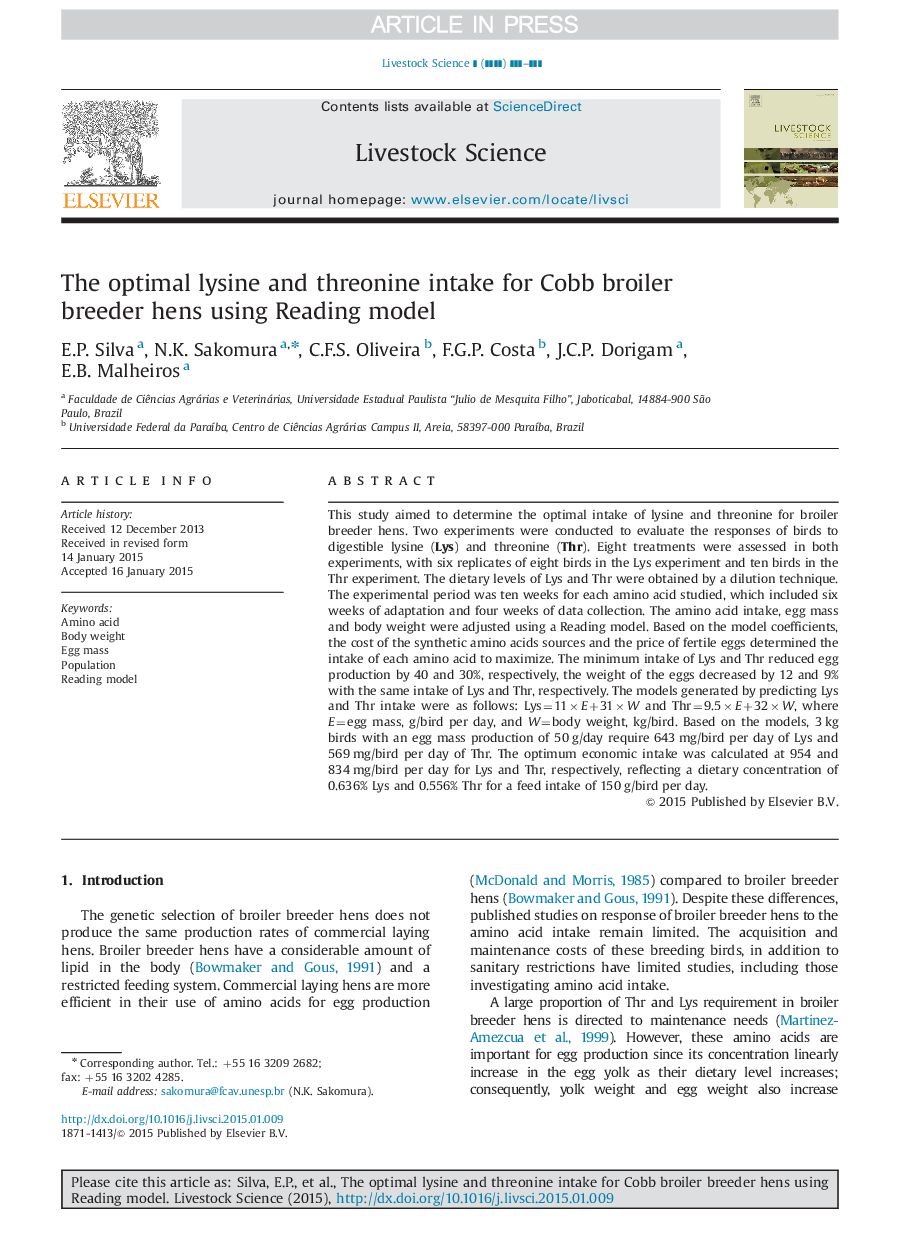| Article ID | Journal | Published Year | Pages | File Type |
|---|---|---|---|---|
| 5790053 | Livestock Science | 2015 | 7 Pages |
Abstract
This study aimed to determine the optimal intake of lysine and threonine for broiler breeder hens. Two experiments were conducted to evaluate the responses of birds to digestible lysine (Lys) and threonine (Thr). Eight treatments were assessed in both experiments, with six replicates of eight birds in the Lys experiment and ten birds in the Thr experiment. The dietary levels of Lys and Thr were obtained by a dilution technique. The experimental period was ten weeks for each amino acid studied, which included six weeks of adaptation and four weeks of data collection. The amino acid intake, egg mass and body weight were adjusted using a Reading model. Based on the model coefficients, the cost of the synthetic amino acids sources and the price of fertile eggs determined the intake of each amino acid to maximize. The minimum intake of Lys and Thr reduced egg production by 40 and 30%, respectively, the weight of the eggs decreased by 12 and 9% with the same intake of Lys and Thr, respectively. The models generated by predicting Lys and Thr intake were as follows: Lys=11ÃE+31ÃW and Thr=9.5ÃE+32ÃW, where E=egg mass, g/bird per day, and W=body weight, kg/bird. Based on the models, 3Â kg birds with an egg mass production of 50Â g/day require 643Â mg/bird per day of Lys and 569Â mg/bird per day of Thr. The optimum economic intake was calculated at 954 and 834Â mg/bird per day for Lys and Thr, respectively, reflecting a dietary concentration of 0.636% Lys and 0.556% Thr for a feed intake of 150Â g/bird per day.
Related Topics
Life Sciences
Agricultural and Biological Sciences
Animal Science and Zoology
Authors
E.P. Silva, N.K. Sakomura, C.F.S. Oliveira, F.G.P. Costa, J.C.P. Dorigam, E.B. Malheiros,
